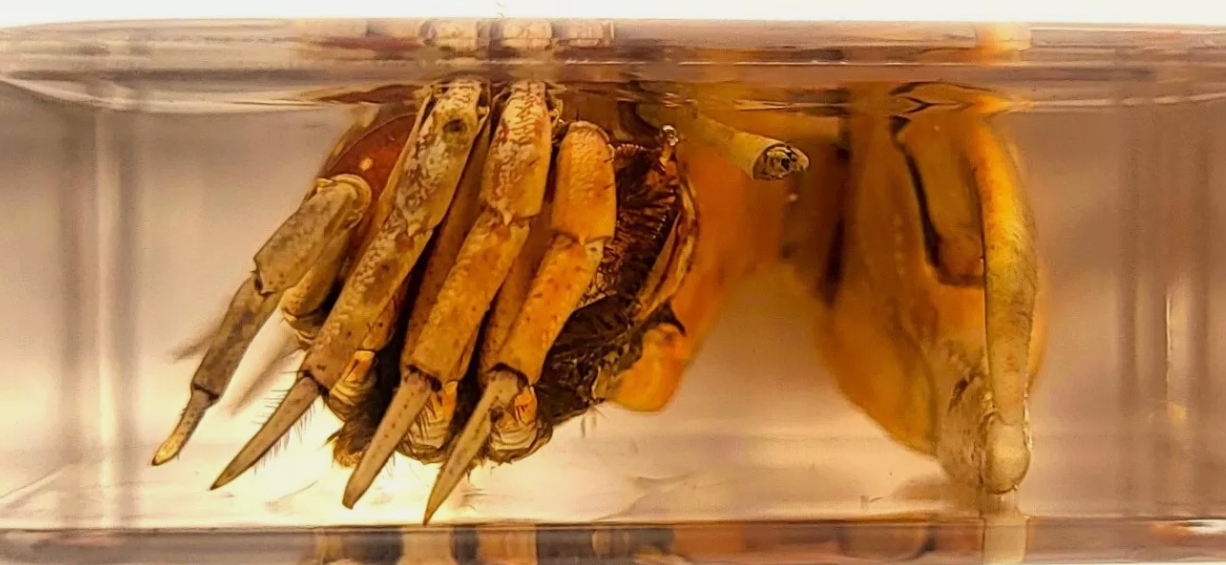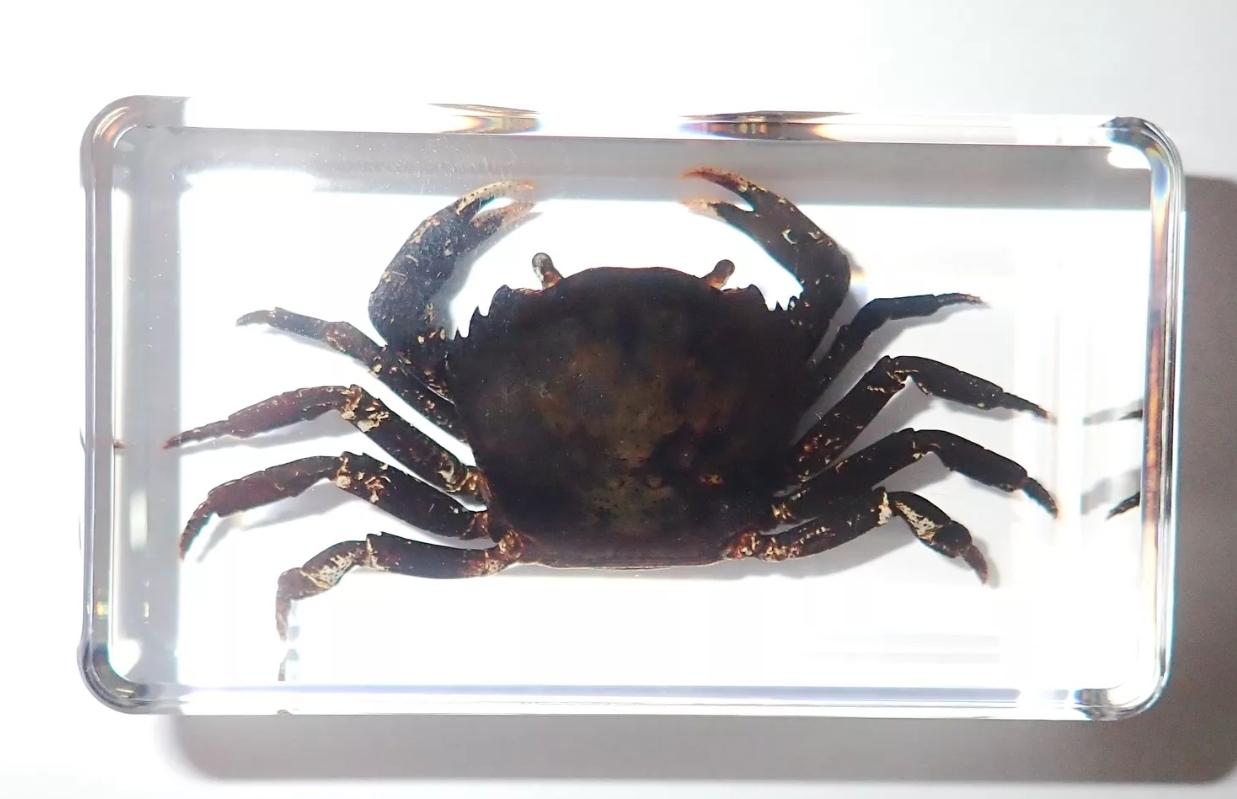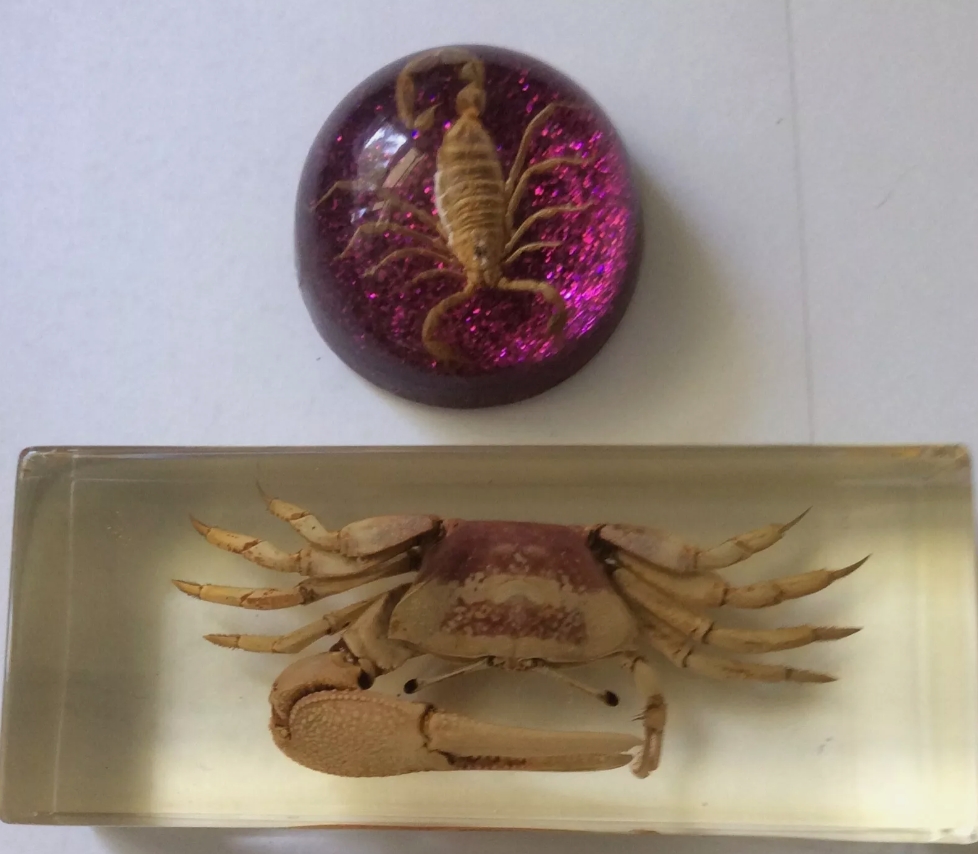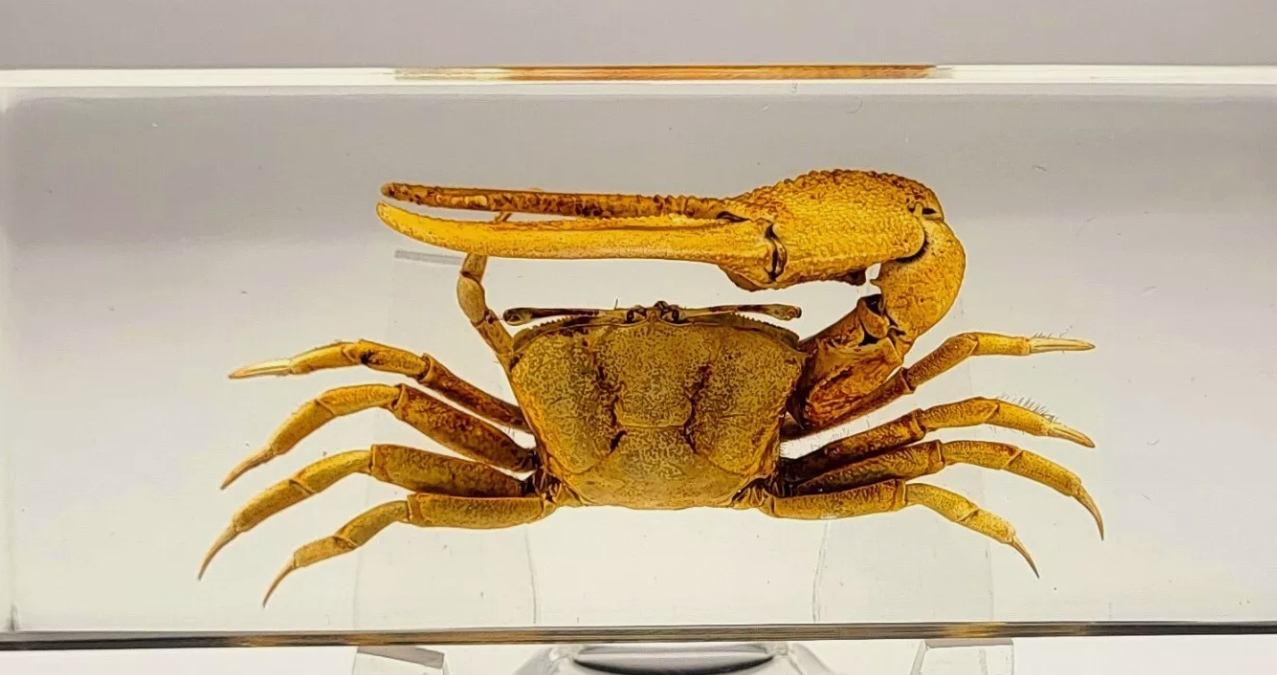Crabs, the crustaceans that live in the ocean or fresh water, have attracted much attention for their unique morphology and rich biological characteristics. The production of crab specimens is not only to show its beautiful appearance, but also to study and protect these creatures.
Crabs have hard shells and often come in a variety of colors and patterns, allowing them to both camouflage and attract potential mates in their natural environment. In the process of specimen preparation, fresh samples need to be collected first. This often requires fishing in a variety of environments in order to obtain different species and states of crabs. Once captured, it is processed into a specimen, which goes through an elaborate dissection and fixation procedure to preserve its original form and color.
During the preparation of specimens, it is essential to examine the biological characteristics of crabs. The crab's body structure includes a horizontal carapace, characteristic pincers, and multiple pairs of feet, each of which contains a wealth of biological information. By observing and recording these characteristics, we can deeply understand their living habits, scientific research value and their role in the ecosystem.
The value of crab specimens is not only reflected in its research use, but also in the awareness of biodiversity conservation. With environmental changes and the impact of human activities, many crab species face threats to their survival. By producing and preserving specimens,biologists and conservation organizations are able to monitor endangered species while conducting educational campaigns to raise public awareness of this important ecological role.
In addition, crab specimens also play an important role in museums and educational institutions. They provide students with intuitive learning materials that enable people to better understand the complexity and mystery of Marine ecosystems.




